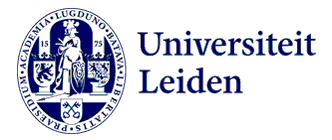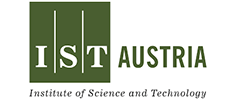The Return of Pancasila: Political and Legal Rhetoric Against Transnational Islamist Imposition
DOI:
https://doi.org/10.31078/consrev516Keywords:
Pancasila, Ideology, Transnational Islamism, Non-Essentialist ApproachAbstract
The rise of transnational Islamist movements in Indonesia in the last two decades recurrences the old debate between Pancasila and Islamism. This kind of fundamental Islamic movements widespread with their conservative view and it has had detrimental effects on the Indonesian society’s social cohesion. President Joko Widodo seeks to revive Pancasila to confront this threat. This is not for the first time Pancasila is used by the Indonesian government to resolve the tension between Islamic values and nation-state principles. Both President Sukarno and Suharto also used Pancasila as a vehicle to discipline their political opponents. Adopting a non-essentialist approach to Pancasila, I argue that the return of Pancasila in recent years would be more complicated because of the narrative of Pancasila revivalism as an adversarial ideology is bounded by traditionalism and lack of progressive interpretation. Instead of locating Pancasila as the counterpart to Islamism, what is needed is re-interpretation of Pancasila as a unifying ideology.References
Aidit, D.N. Membela Pancasila. Jakarta: Yayasan Pembaruan, 1964.
An-Na‘im, Abdullah Ahmed. Islam and the Secular State: Negotiating the Future of Shari’a. Cambridge, Massachusetts, London, England: Harvard University Press, 2008.
Arizona, Yance, Endra Wijaya, and Tanius Sebastian. Pancasila dalam Putusan Mahkamah Konstitusi, Jakarta: Epistema Institute, 2014.
Bourchier, David. ”Indonesianising Indonesia: Conservative indigenism in an age of globalisation.” Social Semiotics 8, no. 2 (1998). DOI: 10.1080/10350339809360408.
Bourchier, David. Pancasila Versi Orde Baru dan Asal Muasal Negara Organis (Integralistik). Yogyakarta: Aditya Media Yogyakarta dan Pusat Studi Pancasila UGM, 2007.
van Bruinessen, Martin. “What happened to the smiling face of Indonesian Islam? Muslim intellectualism and the conservative turn in post-Suharto Indonesia.” RSIS Working Paper, Singapore, 2011.
Cribb, Robert. “The incredible shrinking Pancasila: Nationalist propaganda and the missing ideological legacy of Suharto.” In The return to constitutional democracy in Indonesia, edited by Thomas Reuter. Caulfield: Monash Asia Institute, 2010.
Crouch, Melissa. “Constitutionalism, Islam and the Practice of Religious Deference: The Case of the Indonesian Constitutional Court.” Australian Journal of Asian Law 16, no 2, article 6 (2016).
Crouch, Melissa. “Judicial Review and Religious Freedom: The Case of Indonesian Ahmadis.” Sydney Law Review 34 (2012): 545.
Djafar, Wahyu. “Perppu ormas tak sejalan dengan negara hukum [The Government Regulation in lieu of law is not in line with the state law].” Accessed on May 16. 2019, https://tirto.id/perppu-ormas-tak-sejalan-dengannegara-hukum-cs83.
Fakih, Farabi, “Reading ideology in Indonesia today.” Bijdragen tot taal, land en volkenkunde 171 (2015).
Foucault, Michiel. “The Subject and Power” Cultural Inquiry 8 (Summer 1982).
Hadiz, Vedi R. Islamic Populism in Indonesia and the Middle East. Cambridge University Press, 2016.
Harari, Yuval Noah. Homo Deus: Masa depan umat manusia. Jakarta: Pustaka Alvabet, 2018.
Hasan, Noorhaidi. “Transnational Islam in Indonesia.” In Transnational Islam Southeast Asia in South: Movements, Networks, and Conflict Dynamics, edited by Peter Mandaville et al. NBR Project Report: April 2009. available online at https://www.nbr.org/publication/transnational-islam-in-south-andsoutheast-asia-movements-networks-and-conflict-dynamics/.
Hosen, Nadirsyah. “The Constitutional Court and ‘Islamic’ Judges in Indonesia.” Australian Journal of Asian Law 16, no. 2 (2016).
Hosen, Nadirsyah. Shariá and Constitutional Reform in Indonesia. Singapore: ISEAS, 2007.
Huntington, Samuel P. The Clash of Civilizations and the Remaking of World Order. Simon and Schuster, 1996.
Iskandar, Pranoto. “The Pancasila Delusion.” Journal of Contemporary Asia 45, no. 3 (2016). 723 735. https://doi.org/10.1080/00472336.2016.1195430.
Konstituante Republik Indonesia, Tentang Dasar Negara Republik Indonesia Dalam Konstituante, 3 jilid, Bandung, 1958.
Latif, Yudi. Negara Paripurna: Historisitas, rasionalitas, dan aktualitas Pancasila. Jakarta: Gramedia Pustaka Utama, 1976.
Lev, Daniel S. The transition to guided democracy: Indonesian Politics 1957-1959.
Ithaca, NY: Cornell University. Southeast Asia Program, 1966.
Lindsey, Timothy. “When words fail. Syariah law in Indonesia: Revival, reform or transplantation?” In Examining practices, interrogating theory: Asian Comparative legal studies, edited by P.Nicholson & S. Bidolph. Leiden: Brill, 2008.
Maarif, Syafii. Islam dan Pancasila sebagai Dasar Negara: Studi tentang perdebatan dalam konstituante. Jakarta: LP3ES, 2006.
Maarif, Syafii. “Prologue.” In The illusion of an Islamic State: How an Alliance of Moderates Waged a Successful Campaign Against Radicalization and Terrorism in the World’s Largest Muslim-Majority Country. Edited by Abdurrahman Wahid. Jakarta: LibForAll Foundation, 2011.
Morfit, Michael. “The Indonesian State Ideology According to the New Order Government” Asian Survey 21, no. 8 (Aug, 1981): 838-851.
Mutaqin, Zezen Zaenal. “The Strong State And Pancasila: Reflecting Human Rights in the Indonesian Democracy” Constitutional Review 2, no. 2 (December 2016).
Notonagoro. Beberapa Hal Mengenai Falsafah Pancasila: Pengertian inti-isi-mutlak daripada Pancasila dasar falsafah negara, pokok pangkal pelaksanaannya, secara murni dan konsekuen, Jakarta: Pantjuran Tudjuh, 1970.
Notosusanto, Nugroho. Naskah Proklamasi yang Otentik dan Rumusan Pancasila yang Otentik. Jakarta: Departemen Pertahanan dan Keamanan, 1976.
Otto, Jan Michiel. “Introduction: investigating the role of sharia in national law.” Sharia Incorporated (2010).
Pringgodigdo, A.G. Sekitar Pantjasila. Pandaan: SU.5, 1970.
Purbopranoto, Kuntjoro. “Pancasila Ditinjau dari Segi Hukum Tata Negara”, in Dardji Darmodihardjo et al., Santiadji Pancasila: Suatu tinjauan filosofis, historis dan yuridis konstitusional, Malang: Laboratorium Pancasila IKIP Malang, 1975.
Qurrata A’yun, Rafiqa. “Di balik meningkatnya kasus penodaan agama di Indonesia [Behind the increasing blasphemy in Indonesia].” The Conversation, May 14, 2018, http://theconversation.com/di-balik-meningkatnya-kasuspenodaan-agama-di-indonesia-96354.
Shah, Dian AH. Constitutions, Religion and Politics in Asia: Indonesia, Malaysia and Sri Lanka. Cambridge University Press, 2017.
Song, Seung-Won. “Back to Basics in Indonesia? Reassessing the Pancasila and Pancasila State and Society, 1945-2007.” Dissertation, Department of History and the College of Arts and Sciences of Ohio University, 2008.
Straumann, Benjamin. “The Peace of Westphalia (1648) as a Secular Constitution,” Constellations 15, no. 2 (June 2008), IILJ Working Paper No. 2007/07.
Available at SSRN: https://ssrn.com/abstract=1018731 or http://dx.doi.org/10.2139/ssrn.1018731.
Sudrajat, Tedi. “Harmonization of Regulation Based on Pancasila Values Through the Constitutional Court of Indonesia.” Constitutional Review 4, no. 2 (December 2018).
Sugriwa, I Gusti Bagus. Ringkasan Tjerita Sutasoma, Denpasar: Pustaka Balimas, 1956.
Sulandra, J.W. “Hubungan antara Proklamasi 17 Agustus 1945 dengan Pembukaan dan Batang Tubuh UUD 1945” in Dardji Darmodihardjo et al., Santiadji Pancasila: Suatu tinjauan filosofis, historis dan yuridis konstitusional, Malang: Laboratorium Pancasila IKIP Malang, 1975.
An-Na‘im, Abdullah Ahmed. Islam and the Secular State: Negotiating the Future of Shari’a. Cambridge, Massachusetts, London, England: Harvard University Press, 2008.
Arizona, Yance, Endra Wijaya, and Tanius Sebastian. Pancasila dalam Putusan Mahkamah Konstitusi, Jakarta: Epistema Institute, 2014.
Bourchier, David. ”Indonesianising Indonesia: Conservative indigenism in an age of globalisation.” Social Semiotics 8, no. 2 (1998). DOI: 10.1080/10350339809360408.
Bourchier, David. Pancasila Versi Orde Baru dan Asal Muasal Negara Organis (Integralistik). Yogyakarta: Aditya Media Yogyakarta dan Pusat Studi Pancasila UGM, 2007.
van Bruinessen, Martin. “What happened to the smiling face of Indonesian Islam? Muslim intellectualism and the conservative turn in post-Suharto Indonesia.” RSIS Working Paper, Singapore, 2011.
Cribb, Robert. “The incredible shrinking Pancasila: Nationalist propaganda and the missing ideological legacy of Suharto.” In The return to constitutional democracy in Indonesia, edited by Thomas Reuter. Caulfield: Monash Asia Institute, 2010.
Crouch, Melissa. “Constitutionalism, Islam and the Practice of Religious Deference: The Case of the Indonesian Constitutional Court.” Australian Journal of Asian Law 16, no 2, article 6 (2016).
Crouch, Melissa. “Judicial Review and Religious Freedom: The Case of Indonesian Ahmadis.” Sydney Law Review 34 (2012): 545.
Djafar, Wahyu. “Perppu ormas tak sejalan dengan negara hukum [The Government Regulation in lieu of law is not in line with the state law].” Accessed on May 16. 2019, https://tirto.id/perppu-ormas-tak-sejalan-dengannegara-hukum-cs83.
Fakih, Farabi, “Reading ideology in Indonesia today.” Bijdragen tot taal, land en volkenkunde 171 (2015).
Foucault, Michiel. “The Subject and Power” Cultural Inquiry 8 (Summer 1982).
Hadiz, Vedi R. Islamic Populism in Indonesia and the Middle East. Cambridge University Press, 2016.
Harari, Yuval Noah. Homo Deus: Masa depan umat manusia. Jakarta: Pustaka Alvabet, 2018.
Hasan, Noorhaidi. “Transnational Islam in Indonesia.” In Transnational Islam Southeast Asia in South: Movements, Networks, and Conflict Dynamics, edited by Peter Mandaville et al. NBR Project Report: April 2009. available online at https://www.nbr.org/publication/transnational-islam-in-south-andsoutheast-asia-movements-networks-and-conflict-dynamics/.
Hosen, Nadirsyah. “The Constitutional Court and ‘Islamic’ Judges in Indonesia.” Australian Journal of Asian Law 16, no. 2 (2016).
Hosen, Nadirsyah. Shariá and Constitutional Reform in Indonesia. Singapore: ISEAS, 2007.
Huntington, Samuel P. The Clash of Civilizations and the Remaking of World Order. Simon and Schuster, 1996.
Iskandar, Pranoto. “The Pancasila Delusion.” Journal of Contemporary Asia 45, no. 3 (2016). 723 735. https://doi.org/10.1080/00472336.2016.1195430.
Konstituante Republik Indonesia, Tentang Dasar Negara Republik Indonesia Dalam Konstituante, 3 jilid, Bandung, 1958.
Latif, Yudi. Negara Paripurna: Historisitas, rasionalitas, dan aktualitas Pancasila. Jakarta: Gramedia Pustaka Utama, 1976.
Lev, Daniel S. The transition to guided democracy: Indonesian Politics 1957-1959.
Ithaca, NY: Cornell University. Southeast Asia Program, 1966.
Lindsey, Timothy. “When words fail. Syariah law in Indonesia: Revival, reform or transplantation?” In Examining practices, interrogating theory: Asian Comparative legal studies, edited by P.Nicholson & S. Bidolph. Leiden: Brill, 2008.
Maarif, Syafii. Islam dan Pancasila sebagai Dasar Negara: Studi tentang perdebatan dalam konstituante. Jakarta: LP3ES, 2006.
Maarif, Syafii. “Prologue.” In The illusion of an Islamic State: How an Alliance of Moderates Waged a Successful Campaign Against Radicalization and Terrorism in the World’s Largest Muslim-Majority Country. Edited by Abdurrahman Wahid. Jakarta: LibForAll Foundation, 2011.
Morfit, Michael. “The Indonesian State Ideology According to the New Order Government” Asian Survey 21, no. 8 (Aug, 1981): 838-851.
Mutaqin, Zezen Zaenal. “The Strong State And Pancasila: Reflecting Human Rights in the Indonesian Democracy” Constitutional Review 2, no. 2 (December 2016).
Notonagoro. Beberapa Hal Mengenai Falsafah Pancasila: Pengertian inti-isi-mutlak daripada Pancasila dasar falsafah negara, pokok pangkal pelaksanaannya, secara murni dan konsekuen, Jakarta: Pantjuran Tudjuh, 1970.
Notosusanto, Nugroho. Naskah Proklamasi yang Otentik dan Rumusan Pancasila yang Otentik. Jakarta: Departemen Pertahanan dan Keamanan, 1976.
Otto, Jan Michiel. “Introduction: investigating the role of sharia in national law.” Sharia Incorporated (2010).
Pringgodigdo, A.G. Sekitar Pantjasila. Pandaan: SU.5, 1970.
Purbopranoto, Kuntjoro. “Pancasila Ditinjau dari Segi Hukum Tata Negara”, in Dardji Darmodihardjo et al., Santiadji Pancasila: Suatu tinjauan filosofis, historis dan yuridis konstitusional, Malang: Laboratorium Pancasila IKIP Malang, 1975.
Qurrata A’yun, Rafiqa. “Di balik meningkatnya kasus penodaan agama di Indonesia [Behind the increasing blasphemy in Indonesia].” The Conversation, May 14, 2018, http://theconversation.com/di-balik-meningkatnya-kasuspenodaan-agama-di-indonesia-96354.
Shah, Dian AH. Constitutions, Religion and Politics in Asia: Indonesia, Malaysia and Sri Lanka. Cambridge University Press, 2017.
Song, Seung-Won. “Back to Basics in Indonesia? Reassessing the Pancasila and Pancasila State and Society, 1945-2007.” Dissertation, Department of History and the College of Arts and Sciences of Ohio University, 2008.
Straumann, Benjamin. “The Peace of Westphalia (1648) as a Secular Constitution,” Constellations 15, no. 2 (June 2008), IILJ Working Paper No. 2007/07.
Available at SSRN: https://ssrn.com/abstract=1018731 or http://dx.doi.org/10.2139/ssrn.1018731.
Sudrajat, Tedi. “Harmonization of Regulation Based on Pancasila Values Through the Constitutional Court of Indonesia.” Constitutional Review 4, no. 2 (December 2018).
Sugriwa, I Gusti Bagus. Ringkasan Tjerita Sutasoma, Denpasar: Pustaka Balimas, 1956.
Sulandra, J.W. “Hubungan antara Proklamasi 17 Agustus 1945 dengan Pembukaan dan Batang Tubuh UUD 1945” in Dardji Darmodihardjo et al., Santiadji Pancasila: Suatu tinjauan filosofis, historis dan yuridis konstitusional, Malang: Laboratorium Pancasila IKIP Malang, 1975.
Downloads
Published
2019-05-31
How to Cite
Arizona, Y. (2019). The Return of Pancasila: Political and Legal Rhetoric Against Transnational Islamist Imposition. Constitutional Review, 5(1), 164–193. https://doi.org/10.31078/consrev516
Issue
Section
Articles
































































